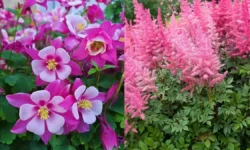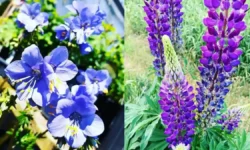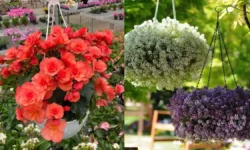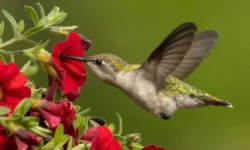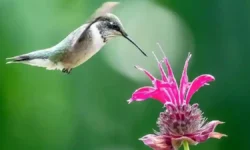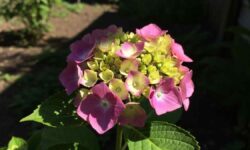With their vibrant hues and unusually large blossoms, Vanda orchids are considered some of the most spectacular members of the orchid family. Their exotic beauty makes them highly sought-after by orchid enthusiasts and gardeners worldwide. However, caring for Vanda orchids can seem challenging at first, especially because they require a specific environment to thrive and bloom beautifully.
This comprehensive guide will provide expert tips on how to care for Vanda orchids, ensuring you enjoy their stunning blooms year after year.
Table of Contents
Understanding Vanda Orchids
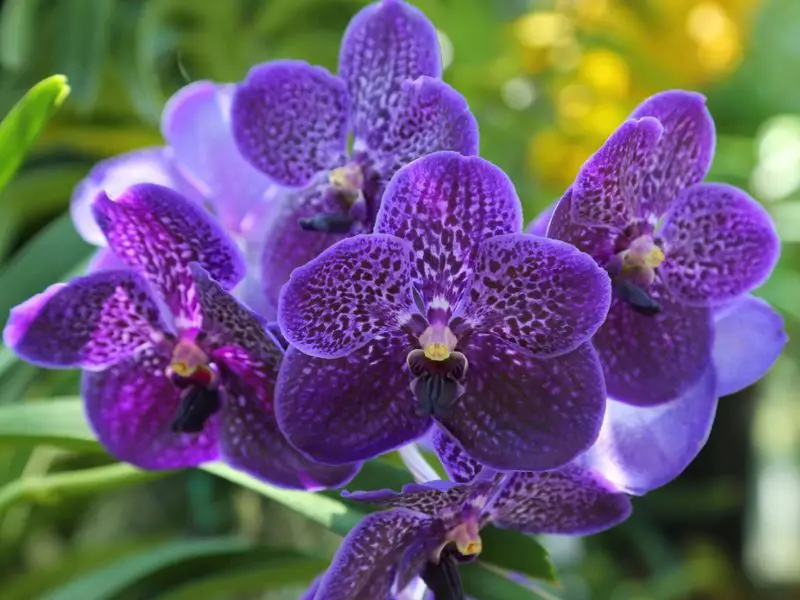
Before diving into care tips, it’s important to understand what makes Vanda orchids unique. Originating primarily from tropical Asia and northern Australia, Vanda orchids are epiphytic, meaning they naturally grow on trees or rocks rather than in soil. This growth habit influences their care needs significantly. Their aerial roots absorb moisture and nutrients from the air, requiring a lot of light and humidity to flourish.
Vandas are known for their spectacular flowers that come in a variety of colors such as vibrant purples, blues, yellows, and reds. The flowers are typically large with a distinctive pattern, making them stand out among other orchid varieties. These orchids tend to bloom multiple times a year when their environmental requirements are met, offering gardeners a continuous show of beauty.
Ideal Growing Conditions for Vanda Orchids
Light Requirements
One of the key factors for healthy Vanda orchids is proper lighting. Unlike many other orchids that prefer indirect light, Vandas thrive in bright, intense light. In their natural habitat, they bask in the tropical sun filtering through tree canopies. For indoor growing, placing them near a south or east-facing window is ideal to provide the bright light they need.
Insufficient light can lead to poor blooming or even failure to flower, while too much direct, harsh sunlight may scorch their leaves. It’s essential to strike a balance by providing bright, filtered light or diffused sunlight, mimicking their natural environment as closely as possible.
Temperature and Humidity
Vanda orchids are tropical plants, so they flourish in warm temperatures ranging from 65°F (18°C) at night to 95°F (35°C) during the day. Maintaining consistent warmth encourages growth and blooming. Sudden temperature drops or drafts can stress the plant, affecting its health.
Humidity is equally crucial since Vandas naturally grow in humid forests. They prefer humidity levels around 60 to 80 percent. If you live in a dry climate or during winter months, using a humidifier or placing the orchid on a humidity tray with water and pebbles helps maintain adequate moisture in the air.
Air Circulation
Good air circulation is vital for Vanda orchids to prevent fungal diseases and rot, especially given their dense root mass and moisture needs. Fresh air reduces the risk of pests and keeps the roots healthy. When growing indoors, ensure the area is well-ventilated, but avoid exposing the orchid to cold drafts.
Potting and Growing Media
Mounting Vs. Potting
Due to their epiphytic nature, Vanda orchids do not require traditional potting soil. Instead, many growers prefer mounting them on wooden slats or placing them in baskets with minimal or no media to allow their roots to hang freely in the air. This setup mimics their natural growing conditions and promotes optimal airflow around the roots.
If you choose to pot your Vanda orchid, use a very coarse, well-draining medium such as chunky bark or charcoal. The medium should not retain excessive moisture because Vanda roots need to dry quickly between watering to avoid rot.
Root Care
Vanda orchids have thick, fleshy aerial roots that are a vital part of their water and nutrient uptake system. These roots absorb moisture from the environment and require special attention. Keeping the roots healthy involves regular misting and ensuring they get enough humidity. Avoid letting the roots stay constantly wet, as this encourages fungal infections.
Inspecting the roots periodically for signs of rot or damage is important. Healthy roots are firm and silvery-green, while mushy, blackened roots indicate problems that need immediate attention.
Watering Vanda Orchids Correctly
Watering is one of the trickiest aspects of Vanda orchid care. Because these orchids often grow without soil, their water needs differ from typical potted plants. The roots dry out quickly, especially when grown mounted or in baskets, so frequent watering is usually necessary.
In warm weather or dry environments, watering daily or every other day is common. However, during cooler seasons, watering can be reduced. The key is to allow the roots to dry slightly between watering without letting them become brittle. Overwatering can lead to root rot, while underwatering causes the plant to dry out and drop leaves.
A good practice is to soak the roots thoroughly when watering, ensuring water reaches all aerial roots. After watering, allow excess water to drain completely. Using room temperature water, preferably rainwater or distilled water, helps avoid mineral buildup.
Fertilizing for Vibrant Blooms
Vanda orchids are heavy feeders compared to other orchid varieties. To achieve the vibrant blooms they are known for, regular fertilization is essential. Using a balanced orchid fertilizer with equal parts nitrogen, phosphorus, and potassium (e.g., 20-20-20) promotes overall health.
During the active growing season, fertilize the orchid every week or two at half the recommended strength to avoid fertilizer burn. Some growers prefer using a bloom booster fertilizer higher in phosphorus to encourage flower production. Fertilizing frequency can be reduced during the dormant or slower growth periods.
Flushing the roots with plain water monthly helps remove any excess fertilizer salts that could harm the roots over time.
Supporting Flowering and Bloom Maintenance
Encouraging Flowering
Proper care encourages Vanda orchids to produce their signature spectacular flowers. Aside from light, temperature, watering, and fertilizing, stress-free growth conditions are vital. Avoid moving the plant frequently or exposing it to sudden changes.
In addition, a slight drop in temperature at night during the flowering season can stimulate bud development. Providing around 55-60°F (13-16°C) at night for a few weeks may help trigger blooms.
Post-Bloom Care
After the flowers fade, it is important to remove spent blooms to redirect the plant’s energy toward new growth. Deadheading involves cutting the flower spike close to the base. Some Vanda orchids bloom from old spikes, but generally, trimming encourages healthier future blooms.
Maintaining good care during and after flowering ensures the plant remains vigorous and ready for the next blooming cycle.
Common Problems and Solutions
Yellowing Leaves
Yellow leaves can indicate several issues including overwatering, nutrient deficiencies, or inadequate light. If the yellowing starts at the base and spreads upward, it’s often a sign of root problems or poor drainage. Adjust watering habits, check root health, and increase light exposure if needed.
Root Rot
Root rot is a common challenge caused by prolonged wet conditions and poor air circulation. Mushy, black roots are a telltale sign. If root rot occurs, remove the affected roots with sterilized scissors and repot the plant in fresh, dry media. Adjust watering and improve airflow immediately to prevent recurrence.
Pests
Vanda orchids can occasionally be attacked by pests like scale insects, aphids, or spider mites. Regularly inspect the plant, especially the underside of leaves and aerial roots. Treat infestations early with insecticidal soap or neem oil, and maintain good cultural practices to keep pests at bay.
Tips for Growing Vanda Orchids Indoors
Growing Vanda orchids indoors is popular because their vivid flowers can brighten any space. To successfully grow them inside, replicate their natural conditions as closely as possible.
Placing the orchid near a bright window with filtered sunlight helps provide adequate light. Using grow lights can supplement natural light, especially in winter or darker climates. Maintaining humidity with a humidifier or humidity tray prevents dryness.
Avoid overcrowding the plant with other houseplants to ensure good air circulation. Monitor temperature and avoid cold drafts or sudden changes.
Regularly misting the aerial roots indoors keeps them hydrated. Because Vandas grow larger than many orchids, ensure enough space for roots to hang freely and for the plant to expand.
Outdoor Growing Considerations
In tropical or subtropical climates, Vanda orchids can be grown outdoors year-round. They thrive when mounted on trees or placed in hanging baskets in shaded areas that receive filtered sunlight.
Protecting Vandas from heavy rain and wind is essential. Excessive water and poor drainage outdoors can cause root rot. Maintaining adequate humidity and air movement outdoors usually comes naturally but monitor during dry seasons.
In cooler climates, outdoor growing is only feasible in the warm months with protection at night or moving indoors when temperatures drop below 60°F.
Propagation Methods
Propagating Vanda orchids is generally done through keikis, which are small plantlets that grow on the flower spikes or stem of mature plants. These can be carefully removed once they have developed roots and planted separately.
Another method is division, where a mature plant is split into smaller sections, each with roots attached. This method requires healthy plants and should be done cautiously to avoid damage.
Propagation allows orchid lovers to multiply their collection and share the stunning beauty of Vandas with others.
FAQs About How To Care For Vanda Orchids
How often should I water my Vanda orchid?
Vanda orchids need frequent watering, usually daily or every other day in warm weather. In cooler months, reduce watering to let roots dry slightly.
What kind of light do Vanda orchids need?
They require bright, intense light. Filtered sunlight near south or east-facing windows is best. Too little light prevents blooming; too much direct sun may scorch leaves.
Can I grow Vanda orchids indoors?
Yes, with sufficient bright light, high humidity, and good air circulation. Using humidifiers and grow lights helps mimic their tropical environment.
What is the best way to fertilize Vanda orchids?
Use balanced orchid fertilizer (e.g., 20-20-20) weekly or biweekly at half strength during growth. Flush roots monthly to avoid salt buildup.
How do I encourage my Vanda orchid to bloom?
Maintain proper light, temperature, humidity, and allow a slight night temperature drop during flowering season. Avoid sudden environmental changes.
Final Thoughts
Caring for Vanda orchids requires attention to detail, but the reward is well worth the effort. Their breathtaking flowers bring vibrant color and exotic charm to any collection. By understanding their natural growth habits and providing the right balance of light, temperature, humidity, water, and nutrition, you can enjoy stunning Vanda blooms year after year.
Patience and consistent care are key, as these orchids flourish with time and dedication. Whether you are a seasoned orchid grower or a curious beginner, following these expert tips will set you on the path to success in cultivating healthy, blooming Vanda orchids.

